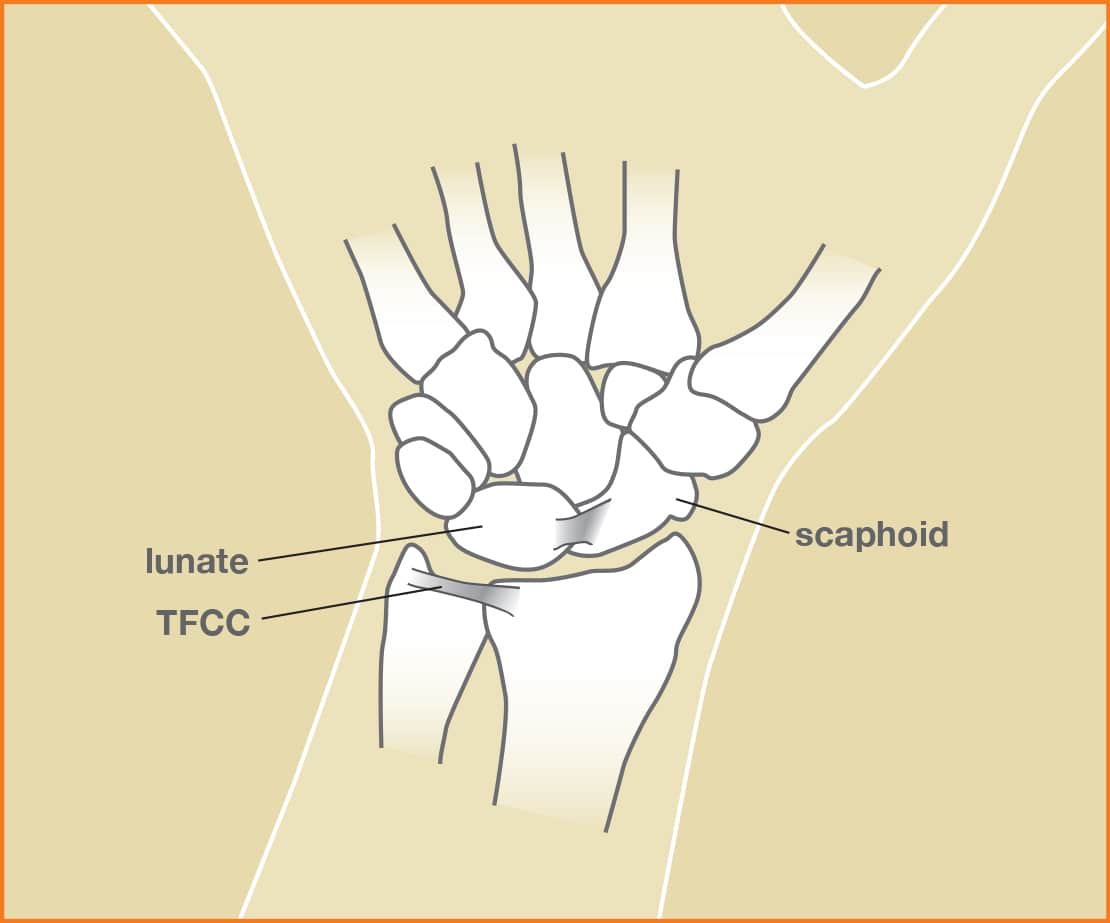Description
The Triangular FibroCartilage Complex, or TFCC, is an important structure in the wrist. The TFCC is made of tough fibrous tissue and cartilage. This tissue supports the joints between the end of the forearm bones (radius and ulna), adding to their stability. The TFCC also helps connect the forearm with the small bones in the ulnar side (“pinkie finger” side) of the wrist. There are several different tissues that form the TFCC, and they blend together to stabilize the ulnar side of the wrist.
The TFCC also acts as a cushion between the end of the ulna and small bones (lunate and triquetrum) of the wrist (Figure 1). In patients whose ulna is longer than the radius at the wrist, the TFCC is usually thinner and more likely to tear.
Figure: A TFCC tear involves the triangular fibrocartilage complex.
CausehELLO
A TFCC tear can happen in two different locations and is usually caused by different problems. The first type of TFCC tear is due to natural wear, and the other is usually from injury. Tears due to wear are the most common and are usually not seen in younger people. They become more common as one gets older.
Tears from injury can come from:
- A fall on the hand or wrist
- A twisting injury (like a drill bit catching, causing a twist of the arm)
- A fracture at the end of the radius
Signs and Symptoms
For some, a TFCC tear may not cause any pain or instability problems in a wrist. Often, MRI studies show tears in people with no pain or problems using the wrist.
Others may experience some or all of the following symptoms:
- Clicking or popping while turning the forearm or moving the wrist from side to side
- Pain
- Weakness
- Limited motion
If there is pain or instability in the wrist, it may be a sign of a problem with the TFCC. In this case, a discussion with your medical provider can help to clarify the issue.
Diagnosing a TFCC Tear
It can be difficult to find the cause of ulnar-sided wrist pain in the area of the TFCC since there are other conditions in this area that can cause similar problems. A hand surgeon may use special wrist examination methods to diagnose a TFCC tear.
Treatment
Nonsurgical Options
Only people with the symptoms mentioned above need to be treated for a TFCC tear. Treatment options that may give relief are:
- Splints
- Activity changes
- Anti-inflammatory medicine
Injections
If these don’t help, there may be surgical treatments available. Possible surgical treatments are varied depending on the specific, underlying TFCC injury.

